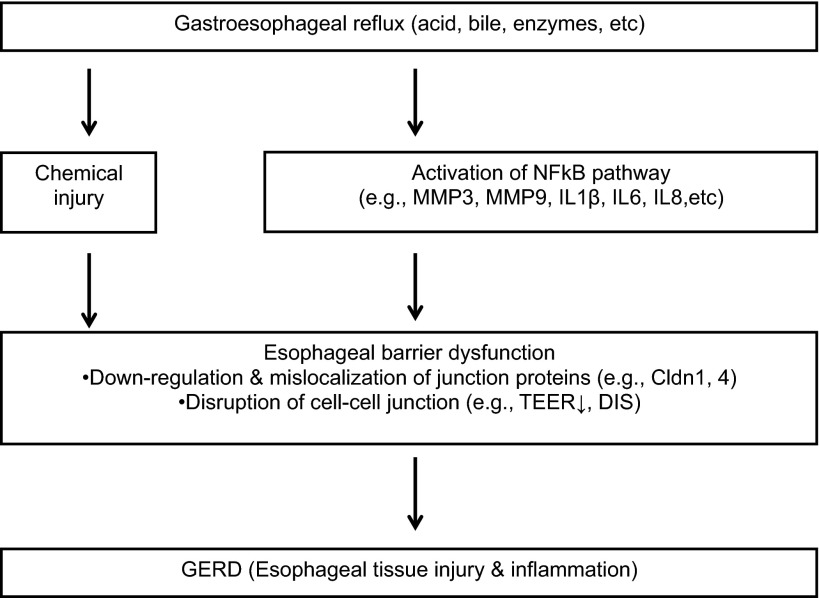Fig. 5.
Proposed mechanism of esophageal barrier dysfunction due to gastroesophageal reflux. Gastroesophageal reflux impairs esophageal barrier function through direct chemical injury (e.g., acid, bile, and enzymes) and subsequent tissue damage. Reflux activates NF-κB in esophageal epithelial cells at the early stage and triggers an inflammatory cascade. Persistent inflammation causes permanent damage to cell-cell junctions. As a result, gastroesophageal reflux disease (GERD) will develop, with the histopathology of esophageal tissue injury and inflammation. Therefore, the NF-κB pathway may be potentially targeted for GERD therapy. TEER, transepithelial electrical resistance; DIS, dilated intercellular spaces.

